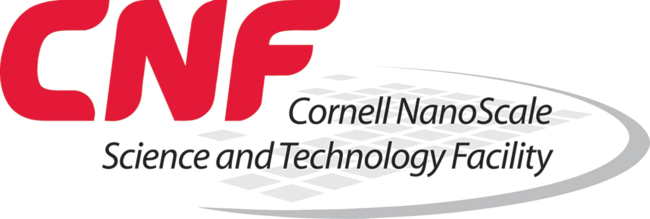Below are archived videos and course notes from the then 3-week long 2004 offering of the TCN NanoCourses. You will find additional topics to those covered in the current 1 week offering of the CNF TCN. Nanotechnology has both changed and stayed the same in the intervening years; these archives will imbue you with additional perspective on the basic areas of micro and nanofabrication.
In 2004, the NanoCourses were a 3 week offering of a non-credit series of lectures in four sections, covering the basic areas required to successfully use microfabrication technology. Emphasis was on the practical limitations and characteristics of basic fabrication processes. This course was not intended to be redundant with regular course work in Applied Physics and Material Science. The goal was, and still is, to relate, for the benefit of new users, the working knowledge required for efficient laboratory and equipment use, as distilled from the over 100 years experience of the CNF staff.
The twice yearly NanoCourses currently offered are condensed down to 3.5 days in January and June; virtual in January and in person in June.
Archived Course notes in PDF format and Videos are linked below.
SECTION 1: PHOTOLITHOGRAPHY
It all starts with lithography, where the pattern is put into resist. This section covers optical lithography, including mask technology, alignment, registration and resist processing, and other lithography tools. There will be discussion on the capabilities and limitations of each technique. Basic CAD concepts and data paths will also be covered. This section is a requirement if you expect to do photolithography at CNFPhotolithography Course Notes
Microlithography Course Notes
1.1 Introduction, Sandip Tiwari
1.2 Photolithography: Part I , Part II, Part III, Garry Bordonaro
1.3 CAD Issues for Photolithography, Karlis Musa
1.4 E-Beam Lithography, Alan BleierSECTION 2: VACUUM
Almost all processing is done in a vacuum. You will learn how vacuums are made and measured. You will learn why vacuums are important and how they can affect your process. Most importantly, you will learn how your samples and little things you do affect vacuum system performance.Vacuum Course Notes
2.1 Vacuum Science, Pumps and Gauges: Part I, Part II, Lynn Rathbun
2.2 Vacuum System Performance: Part I, Part II, Lynn RathbunSECTION 3: THIN FILMS
Experienced users know lithography is often the easy part. Getting the pattern into your material is the hard part. This section covers the technology for both deposition and etching of thin films, including evaporation, sputtering, reactive ion etching, and chemical vapor deposition. Since there are often several ways to do a process sequence, emphasis will be placed on the differences between the techniques and resulting films, and on proper process integration.Thin Films Course Notes
3.1 Thin Film Process Integration, Michael Skvarla
3.2 Thin Film Properties: Part I, Part II, Michael Skvarla
3.3 Evaporation, Michael Skvarla
3.4 Dry Etching, Meredith Metzler
3.5 Sputter Deposition, Jerry Drumheller
3.6 CMP, Daniel Woodie
3.7 Bonding and Embossing, Mandy Esch
3.8 Wet Etching: Part I, Part II, Phil InfanteSECTION 4: CHARACTERIZATION
When your device doesn't work properly, it's time for the real work: finding out what went wrong. A variety of thin film analyzers are available for characterization of the macroscopic and microscopic properties of thin films. They almost always have 3 or 4 letter acronyms such as SAM, EDS, SEM, RBS, SIMS, AFM, etc. We will cover the characteristics and limitations of these techniques, and their use in real problems. More importantly, we will learn that analytical techniques can easily be misused if you don't understand what is really being measured. If you ask the wrong question, you are guaranteed to get the wrong answer!Characterization Course Notes
4.1 Introduction & Optical Microscopes, Lynn Rathbun
4.2 SEM, Daron Westly
4.3 Optical & Electrical, Phil Infante
4.4 Auger & Thin Film Analysis, Lynn Rathbun
4.5 AFM, John Treichler
